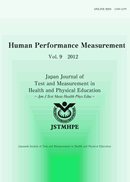High-intensity exercise risks lowering salivary secretory immunoglobulin A (s-SIgA), and a lower s-SIgA level is associated with upper respiratory tract infections. Volleyball training camps have reported s-SIgA level reduction. Nonetheless, the relationship between jump performance and s-SIgA remains unclear. This observational study aimed to investigate the effect of a single volleyball game on the s-SIgA response and the relationship between in-game jump performance and changes in s-SIgA secretion. Thirteen elite collegiate female volleyball players (mean age, 20.6 ± 1.4 years) participated. Pre-and post-match saliva samples and questionnaires were collected; s-SIgA concentrations were quantified from saliva samples, and s-SIgA secretion rates were calculated. Jump data were measured using the jump load management platform “VERT Coach”. Jump performance was assessed by the number of jumps, total work, and work per time. Preand post-match s-SIgA secretion rates did not significantly change (44.7 ± 17.4 and 47.1 ± 21.7 μg/ min, respectively); however, s-SIgA secretion rates decreased in 8 of 13 players. Changes in s-SIgA secretion rates did not significantly correlate with any jump performance. Our results suggest that a single volleyball game did not affect s-SIgA response and that in-game jump performance in female volleyball players was not associated with s-SIgA response.
View full abstract
